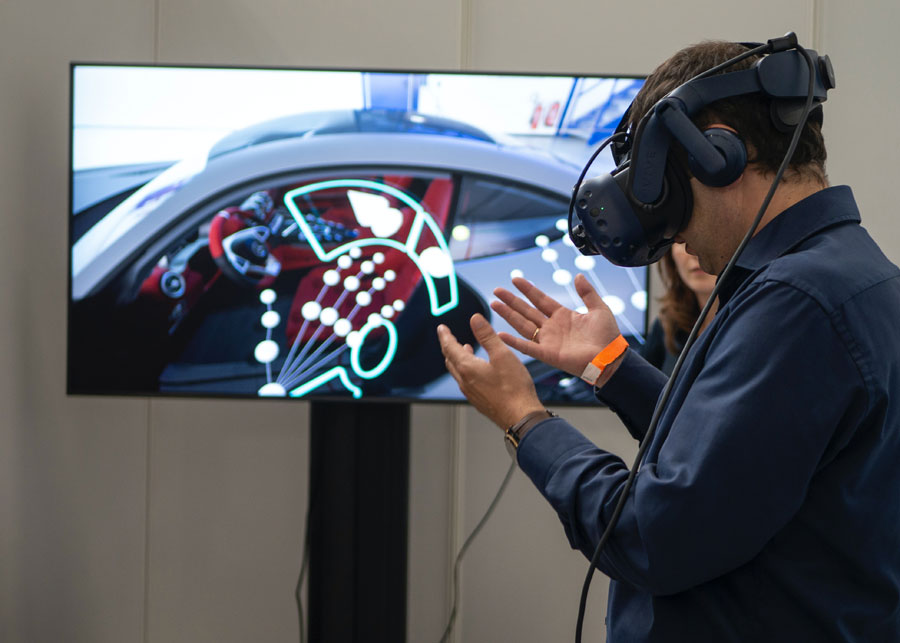Recently the virtual reality market has boomed
In recent years, the virtual reality market has boomed, a credit to technological advancements in the field. Plus, products such as Google Cardboard and Oculus Quest 2 have started building affordable, consumer-friendly Virtual Reality headsets. In 2021, they might seem expensive to the masses, but it won’t be long before more affordable headsets surface in the market.
As we can see, VR has already embedded itself into the fabric of our reality. Major Automotive Brands such as Audi, BMW, Jaguar, and Toyota have all started dipping their toes into the waters of Virtual Reality. In future, backseat passengers can dive into a Virtual world rather than await the arrival of their destination. BMW has already started incorporating Virtual Reality in engineering their vehicles. It opens up new doors for the creators. It provides them with a creative space where they can visualise new functions and interior ideas without building a model. The automotive industry is one of the few top industries VR has conquered. Apart from it, Virtual Reality has left a great impression on the world’s top industries, including healthcare, Retail, and Education.
Virtual reality in Healthcare Industry
Virtual Reality has also helped the healthcare industry take better care of their patients. One of VR’s revolutionary applications in Healthcare has been therapeutic.
When implemented by a healthcare expert, VR can help relieve pain and anxiety. Let’s talk about the VR platforms that are already available in the market.
- Limbix, a therapeutic platform that focuses on adolescent mental health, helping them fight depression and reduce the suicide rate. Like Limbix, Openmind 360 is another platform that focuses on teenage mental health.
- OxfordVR, also known as OVR or OVRHealth, is a mental health platform focusing on cognitive therapy in a Virtual Environment.
- Psious is a platform that allows mental health professionals to incorporate Virtual Reality into their treatment and therapy plans.
These technologies will have to adapt to the continued change and accelerated growth of Virtual Reality technologies to provide a better VR experience.
Brennen Spiegel, an MD and a professor of medicine, has stated that VR offers a drug-free pain control option. He further adds that many patients will likely need medicine, but VR therapy is bound to reduce the necessity of drugs. Soon, we might step into an era when the need for drugs becomes obsolete. It will be an era of scientific and medical advancement working in conjunction with technologies such as VR and AI to create a better and sustainable healthcare system.
Virtual Reality in Retail Industry
The Ikea Place app is one of the most popular and successful Augmented Reality implementations today. Ikea also has a Virtual Showroom that allows customers to visualise the furniture and other products. The customers have complete control over the customisation of their furniture in the Virtual world. The showroom lets the customer explore and work with combinations of different colours, and fabrics, with the opportunity to view them in different light settings.
One of the leading automotive brands, Mercedes Benz, has invested in Virtual showrooms in the middle east. People in Saudi Arabia, Lebanon, Qatar, Bahrain, and Dubai, can now visit these showrooms to get the complete VR car shopping experience.
At Nike Stores, with the help of AR and VR, customers can scan shoes and other products to get more information about them. Nike also has developed a VR presentation of how the products were made.
In 2018, Lowe Innovation Labs designed Holoroom, a virtual environment where customers could try out products such as power tools in a safe environment. At present, Lowe has taken it a step further, completely incorporating VR in their stores. Like Ikea showrooms, people at the Lowe store can visualise using VR gear to choose the right products for their home renovation needs.
Virtual reality in Education
Dissecting a frog in biology class has traumatised numerous students over the years, but Augmented Reality platforms such as Froggipedia should help ease students into the process. In future, Virtual Reality labs can ensure that students dissect a virtual frog, and regardless of any mistake they make, they can always start from scratch until they perfect it. VR allows students to perfect their craft, interact with virtual models, and have better learning opportunities.
For example, Microsoft’s Mixed Reality Healthcare Platform built in collaboration with Hololens allows students, interns, and doctors alike to engage with a complete Interactive virtual human body model, turning it into a playground where they can get detailed knowledge about the body. In a virtual space, the students can enter this body and take a look at the human organs from the inside, learning about the body and so they can treat life-threatening wounds and conditions in future.
Language immersion has been made simple by Virtual reality language learning apps such as Mondly VR, ImmerseMe, and VirtualSpeech. With a proper VR setup, anyone can learn a new language using these VR Platforms.
Most of the examples we have seen are live examples of Virtual Reality in 2021. These advancements are setting us up for a future that completely embraces Virtual Reality in all walks of life.
Author Bio
Ashutosh Pandey Founder, Director, CEO of 360 Bright Media, I have a very strong background in the advertising technologies, such as Augmented Reality and Virtual Reality, and learning new things in the Digital Marketing World.





